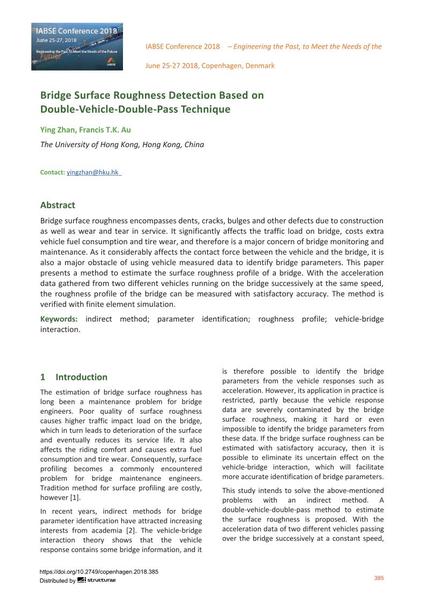| Medium: |
conference paper |
| Language(s): |
English
|
| Conference: |
IABSE Conference: Engineering the Past, to Meet the Needs of the Future, Copenhagen, Denmark, 25-27 June 2018 |
| Published in: |
IABSE Conference Copenhagen 2018 |
|
Page(s):
|
385-392
|
Total no. of pages: |
8 |
|
|
Page(s):
|
385-392
|
| Total no. of pages: |
8 |
| DOI: |
10.2749/copenhagen.2018.385 |
|
Abstract:
|
Bridge surface roughness encompasses dents, cracks, bulges and other defects due to construction as well as wear and tear in service. It significantly affects the traffic load on bridge, costs extra vehicle fuel consumption and tire wear, and therefore is a major concern of bridge monitoring and maintenance. As it considerably affects the contact force between the vehicle and the bridge, it is also a major obstacle of using vehicle measured data to identify bridge parameters. This paper presents a method to estimate the surface roughness profile of a bridge. With the acceleration data gathered from two different vehicles running on the bridge successively at the same speed, the roughness profile of the bridge can be measured with satisfactory accuracy. The method is verified with finite element simulation.
|
|
Keywords:
|
parameter identification indirect method roughness profile vehicle-bridge
interaction
|

